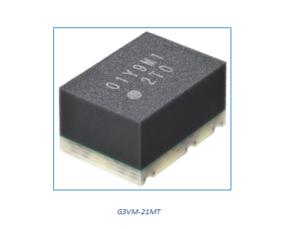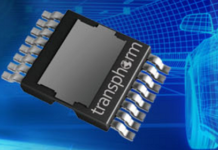
OMRON Corporation has globally released its new MOS FET relay module “G3VM-21MT”. The product is the first electronic component in the world to adopt a “T-type circuit structure.
With T-type circuit structure consisting of compact size and longer lifecycle solid state relays that output signals using no physical contact, the relay module minimizes the leakage current which has long been a problem with semiconductor test equipment.
G3VM-21MT allows high-precision measurement and improves productivity of electronic components.
G3VM-21MT enables switching measurement signals in the test equipment mainly used to perform electrical tests for semiconductor devices. In addition to the MOS FET relay features of compact size and longer lifecycle, G3VM-21MT is the world’s first MOS FET relay Module with “T-type circuit structure” which consists of three MOS FET relays that help reduce the leakage current to a minimal level without affecting the test equipment’s inspection accuracy while allowing high-precision measurement and decreasing maintenance frequency of the test equipment.
Amid the digital age where functions of electronic components are getting diversified and production volume increasing, there is a growing need for higher performance of semiconductor test equipment.
Mechanical reed relays, which have been used for a part that performs high-precision measurement in semiconductor test equipment, have extremely low leakage current but they require replacement on a regular basis, maybe several times for every single month due to wear and abrasion of the contacts that lead to affecting the measurement accuracy.
Such maintenance work may substantially affect the production efficiency, so adoption of solid-state relays has been long desired as its longer lifecycle. So far, MOS FET relays are considered not suitable for precise electrical tests due to technological difficulty to reduce the leakage current in relation with its feature and were not used in test equipment which requires high reliability.
To meet these needs, by utilizing OMRON’s technologies of electronic components cultivated over many years, we succeeded in commercializing the relay module product by adopting the “T-type circuit structure” and significantly reducing the leakage current lower than or equal to 1pA(one trillionth part of the ampere).
The challenge in reducing the leakage current in a solid-state relay as close to zero as possible eliminates the leakage current problem and improves test equipment reliability. Moreover, by integrating long life MOS FET relays into the relay module, it allows for shorter downtime for maintenance which have been a long-standing challenge for mechanical relays. With the launch of G3VM-21MT, OMRON will strive to contribute to the improvement in productivity of electronic components and support the evolution of digital transformation in society.

Features
High equipment reliability by reducing leakage current to 1pA to lower: Leakage current has been a long-term disadvantage of semiconductor relays and G3VM-21MT helps solve the problem by minimizing the leakage to 1pA or lower. G3VM-21MT successfully achieved actual performance of lower than or equal to 0.1pA level while minimizing the impact on measurement accuracy of the application.

- Longer lifecycle and significant decrease in maintenance frequency: The output circuit of G3VM-21MT relay module consists of semiconductor MOS FET relays using no physical contact, hence no need to perform maintenance on the contacts for wear or abrasion as there will be no arc discharge generated from opening and closure of the circuit.

- Reduced mounting space – high-density mounting by space-saving and wire-saving: G3VM-21MT achieves compact size of 5mm×3.75mm×2.7mm by incorporating the complex wiring diagram of input and output circuits into the internal module, ultimately simplifying PCB wiring of the application.
For more information, visit OMRON’s website: https://www.omron.com/


















